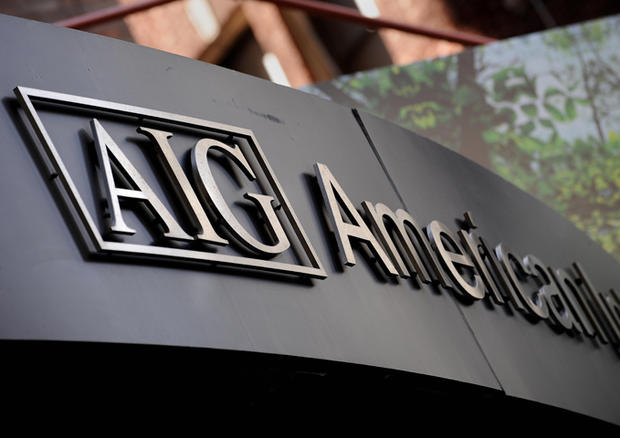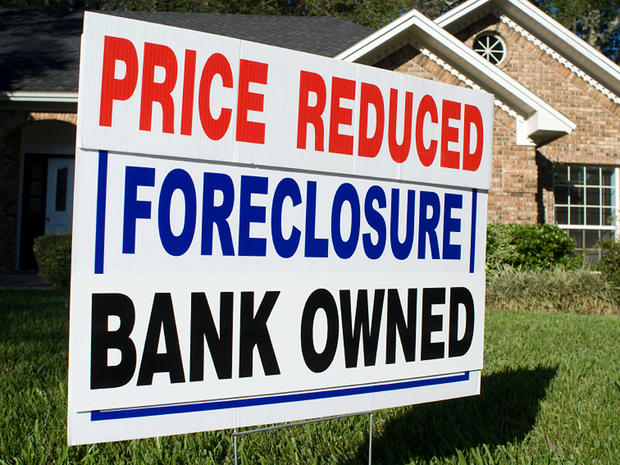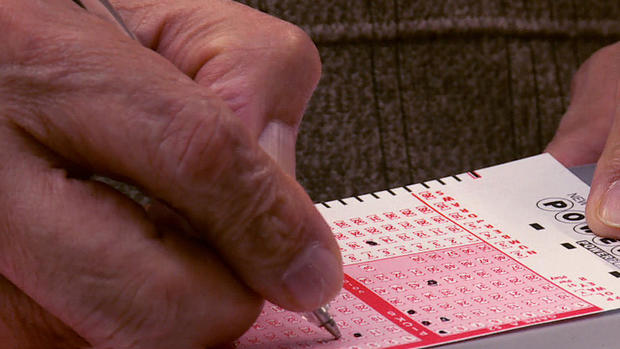Lehman's legacy: What caused the financial crisis
(MoneyWatch) The term "perfect storm," while by now a journalistic cliche, remains the best metaphor for the 2008 subprime mortgage meltdown. The greed of lenders, somnolence of investors, years of financial deregulation and a host of other factors blew up into an economic tempest from which, nearly five years to the day after the Sept. 15, 2008, collapse of Lehman Brothers sparked a global financial crisis, the U.S. has yet to recover.
Except that this storm wasn't natural in the least, an unpredictable disaster that could not have been avoided, as some bank CEOs self-servingly sought to characterize the meltdown. Rather, the crash was entirely man-made. In the words of the Financial Crisis Inquiry Commission, a government-led panel of experts convened during meltdown to investigate what caused it:
Despite the expressed view of many on Wall Street and in Washington that the crisis could not have been foreseen or avoided, there were warning signs. The tragedy was that they were ignored or discounted. There was an explosion in risky subprime lending and securitization, an unsustainable rise in housing prices, widespread reports of egregious and predatory lending practices, dramatic increases in household mortgage debt, and exponential growth in financial firms' trading activities, unregulated derivatives, and short-term "repo" lending markets, among many other red flags. Yet there was pervasive permissiveness; little meaningful action was taken to quell the threats in a timely manner.
Yet if the financial crisis had many strands, they are not too numerous to count or too complicated to understand. Indeed, with signs that the banking system remains vulnerable, the task is an urgent one. The following lists nine major causes of the crash.
Lehman's legacy: What caused the financial crisis
Investment banks and commercial banks became one
For years leading up to the 2008 collapse, financial firms and their lobbyists in Washington had successfully weakened key provisions of "Glass-Steagall," the law passed in the aftermath of the Great Depression that separated commercial banks from investment banks. Then, in 1999, the entire bill was repealed, and there was nothing to stop banks, whose deposits were guaranteed by the government via the FDIC, from diving into the kind of risky businesses that investment banks specialized in. Such mergers occurred at the same time that federal regulators were seeing their staffs and budgets cut. One example of the deregulatory ethos of the time was then-Vice President Al Gore's National Performance Review, popularly known as the Reinventing Government initiative, which pushed regulatory agencies to treat businesses more like customers and less like industries in need of stringent oversight. As the FCIC put it:
More than 30 years of deregulation and reliance on self-regulation by financial institutions, championed by former Federal Reserve chairman Alan Greenspan and others, supported by successive administrations and Congresses, and actively pushed by the powerful financial industry at every turn, had stripped away key safeguards, which could have helped avoid catastrophe.
Lehman's legacy: What caused the financial crisis
Recovery from one bubble creates another one
In an effort to shore up the economy after the dot-com bust in 2000, the Federal Reserve dropped interest rates to 1 percent and kept them at that level for an extended period. This caused financial assets -- including real estate and stocks -- to soar in value. The easy money also meant lower interest rates paid on municipal bonds and Treasury bills. That decline forced asset managers to seek higher returns in other kinds of investments -- such as risky mortgage-backed securities. The mantra of the day was, "U.S. real estate values have never gone down." In time, the demand for higher-yielding assets led Wall Street banks -- now operating as government-insured behemoths with a penchant for rolling the dice -- to begin bundling mortgages into securities that could be sold on to investors. The mortgages that promised the biggest returns were the subprime loans made to borrowers least likely to be able to repay them. The problem was exacerbated because most of the mortgages were originated by non-bank, which exempted them from already lax bank regulations.
Lehman's legacy: What caused the financial crisis
Ratings agencies danced to Wall Street's tune
To this day, the three leading credit rating agencies, Moody's, Standard & Poor's and Fitch, are all paid to rate securities by the companies selling those securities. To keep their clients happy and the money rolling in, the ratings firms placed a AAA rating on securities they knew to be junk.
Lehman's legacy: What caused the financial crisis
Unregulated derivatives
The market for derivatives, financial instruments that allow investors to buy a security whose value derives from another asset, boomed in the run-up to the crash. A major reason for their popularity -- they are unregulated. This means they have no counter-party disclosure, exchange listing or reserve requirements. As a result, insurance giant AIG was able to write $3 trillion in derivatives while not keeping enough money on hand to cover those claims. Shortly before Lehman collapsed, derivatives were valued at three times the global economy. While the 2010 Dodd-Frank financial reform law was supposed to establish rules and exchanges for trading derivatives, financial industry lobbyists have since weakened the proposed regulations.
Lehman's legacy: What caused the financial crisis
SEC bowed to banks and loosened capital requirements
In 2004, the Securities and Exchange Commission changed the rules for how much debt five Wall Street banks -- Goldman Sachs, Morgan Stanley, Merrill Lynch, Lehman Brothers and Bear Stearns -- were allowed to have relative to their equity. They were allowed unlimited leverage instead of the 12:1 leverage limit that had been in place. Soon, the five ramped up their borrowing, with firms commonly having only $1 on hand for every $40 they had borrowed. By 2008, three of those banks were gone and the other two only survived only because of a massive government bailout.
Lehman's legacy: What caused the financial crisis
Feds trump state predatory lending laws
Also in 2004, a true low-water mark in financial regulation, the Office of the Comptroller of the Currency preempted state laws regulating mortgage credit and national banks. This meant banks no longer had to comply with state anti-predatory lending laws. National lenders started selling risky loan products in those states, including adjustable-rate mortgages; interest-only loans; negative amortization loans, where the borrower's indebtedness goes up each month; and the notorious "liar loans," which did not require lenders to verify borrowers' income. The result was predictable: Borrowers defaulted, and foreclosure rates spiked.
Lehman's legacy: What caused the financial crisis
Executive pay schemes made gambling look good
Wall Street executives get bonuses on the basis of short-term performance. Hitting the right numbers for the quarter or the year is like hitting the right numbers in the lottery. This gives those executives incentives to take huge risks. In short, they get paid if they have hit their targets, and they don't suffer if those investments later collapse. That practice, put in place and guarded by those who gained from it, continues to this day.
Lehman's legacy: What caused the financial crisis
Passing the bucks
Private-sector lenders lacked any incentive to determine if the mortgages they originated were any good. After all, they made their money by selling mortgages to firms that in turn packaged them into securities and then sold them to investors. Determining the quality of mortgages wasn't in the lenders' and the securitizers' financial interest. As a result, underwriting standards were gutted and traditional lending metrics like income, credit rating and loan-to-value were ignored. Commercial banks, wanting to get in on the market, soon started compensating salespeople based on how many loans they made instead of how good those loans were.
Lehman's legacy: What caused the financial crisis
Fannie and Freddie join the party
Until the private non-bank lenders got into the subprime market, the two quasi-governmental housing agencies, Fannie Mae and Freddie Mac, had been the dominant players in buying, guaranteeing and securitizing mortgages. Their share of the market dropped precipitously during the housing bubble, primarily because they were still working to ensure the quality of loans. By 2006, more than 84 percent of the subprime mortgages were issued by non-banks. That's when Fannie and Freddie started buying the subprime mortgages that had been securitized by the non-bank originators. They did this in an effort to make more money, not to try to meet their purported mission of making mortgages available to qualified low-income borrowers.









